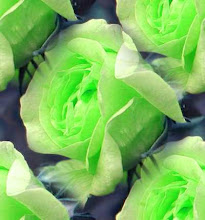
The following Brief Video on Emergence points to two signposts. One is space and the other is movement. But what is space? According to Merriam-Webster's dictionary, among it's various meanings, space is simply that limitless area in which all things exist and move. Let us look at space from an anthropological and historical perspective. Mircela Eliade, anthropologist, and historian wrote a great book entitled The Sacred and the Profane. In it she states that space is homogeneous and neutral; no break qualitatively differentiates the various parts of its mass. Geometrical space can be cut and delimited in any direction: but no qualitative differentiation and, hence, no orientation are given by virtue of it's inherent structure. On the other hand, for the religious man space becomes sacred. Now stay with me. Eliade's makes the observation that to the religious man space is not homogeneous: he experiences interruptions, breaks in it: some parts of space are qualitatively different from others. "Draw not nigh hither," says the Lord to Moses; put off thy shoes from off thy feet, for the place whereon tho standest is holy ground" (Exodus, 3.5). There is, then, a sacred space, and therefore a strong, significant space; there are other spaces that are not sacred and so are without structure or consistency, that is amorphous. Nor is this all. For religious man, this spatial nonhomogeneity finds expression in the experience of an opposition between space that is sacred-the only real and really existing space-and all other spaces, the formless expanse surrounding it. Furthermore, it must be said that the religious experience of the nonhomogeneity of space is a primordial experience, homologizable to a founding of the world. For it is the break effected in space that allows the world to be constituted, because it reveals the fixed point, the central axis for all future orientations. When the sacred manifests itself in any hierophany, there is not only a break in the homogeneity of space: there is also revelation of an absolute reality, opposed to the non reality of the vast surrounding expanse. Eliade continues and says that the manifestation of the sacred ontologically founds the world. In the homogeneous and infinite space, in which no point of reference is possible and therefore, no orientation can be established. the hierophany reveals an absolute fixed point, a center. Sacred space is "symbolized" space as it reveals a reality which is not evident in ordinary experience. Historian of religions, Winston King summarizes Eliade's conception of sacred space. "It is at once the center of the universe, a copy of the universe, a principle of order, and a channel of vital interconnection between the divine and the human planes of existence" Eliade suggests that humanity can only live in sacred space and that the sacred as an element in the structure of consciousness draws every human being, "even unconsciously, toward the Centre, and towards his own centre, where he can find integral reality--sacredness."
Space is everywhere; in the cosmos, in the world, in men's anatomy, in cells, in molecules, in electrons, and qua tum physics. Why? Because living systems in order for them to move, to grow, to expand, to contract, to vasodilate, to vasoconstrict, to pump, to collide, to travel, need a limitless area to do so. And so with space before us, and endless amout of it I may add, we find emergence moving in and about it. Moving so well that its as if emergence knew spaces geographic coordinates like the back of his hand. Movement obeys the laws of physics and a lesson in physics is not possible in this blog article. Sufficient to say, that perhaps emergence is not only obeying the laws of physics but derives its power from the collective force of human energies into a synergy so outstanding I cannot help but ascribe to it a special meaning. This meaning is the human soul. The soul is a byproduct of a collective synergistic energy humans eminent when human's life circumstance recombine in a meaningful way. This meaningful way is experience by people to be unique and inspirational. In conclusion, emergence shows how the soul operates and the location of it does not reside in the heavens or in religious houses of worship, but out there, in space, in time, before us, behind us, surrounding us and for us.
